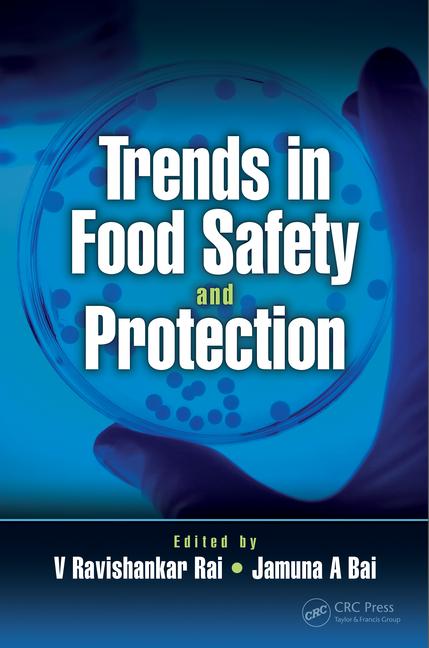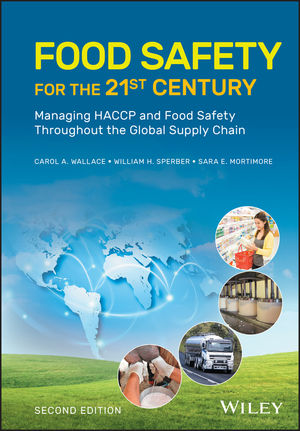Food Safety Approaches to Achieve Better Public Health Outcomes in Developing Countries

 It is not food if it is not safe. Access to safe, nutritious, tasty, and wholesome food is a fundamental human right that should be available and affordable to all people, including people in developing countries. Food safety is the absence or the existence of acceptable/safe levels of hazards [microbiological, chemical (including radioactive materials and food allergy) or physical] in food. Food safety management systems must ensure that food, at every stage of the food chain from farm to table [production (growing/farming), harvesting, packing, processing, storage, distribution, marketing, preparation, and consumption (Figure 1)], is safe. Nutrition is the practice of consuming and utilizing foods for the growth, maintenance, and repair of the cells in the human body. Public health can be protected when the health of all people/communities is improved and/or protected. Nutrition and public health cannot be improved without food safety.
It is not food if it is not safe. Access to safe, nutritious, tasty, and wholesome food is a fundamental human right that should be available and affordable to all people, including people in developing countries. Food safety is the absence or the existence of acceptable/safe levels of hazards [microbiological, chemical (including radioactive materials and food allergy) or physical] in food. Food safety management systems must ensure that food, at every stage of the food chain from farm to table [production (growing/farming), harvesting, packing, processing, storage, distribution, marketing, preparation, and consumption (Figure 1)], is safe. Nutrition is the practice of consuming and utilizing foods for the growth, maintenance, and repair of the cells in the human body. Public health can be protected when the health of all people/communities is improved and/or protected. Nutrition and public health cannot be improved without food safety.
Safe and nutritious food is the source of human energy and the first defense against diseases. Beginning at a very early age, people need healthy diets to function properly. Infants need nutrients that exceed what can be provided by breast milk alone. They need a combination between breast milk and diverse and nutrient-rich diets including plant and animal source foods (highly perishable food) such as milk products, fruits, vegetables, eggs, fish, and meat. Consumer demand for nutritious/diverse diets has been increasing, day by day, worldwide, including in developing countries. Therefore, sustainably providing all people with diverse and safe diets (especially for the most vulnerable populations: infants, elderly people, pregnant women, individuals with weakened immune systems by chronic conditions like diabetes, cancer, and HIV/AIDS; the U.S. Food and Drug Administration has developed specific guidelines for each category of at-risk population[1]) is an ultimate goal of international health organizations such as the World Health Organization (WHO).
However, diverse and nutrient-rich diets (including fruits, vegetables, meat, eggs, fish, and dairy products) can bring with them food safety challenges. According to the U.S. Centers for Disease Control and Prevention, the food most associated with foodborne outbreaks in the U.S. between 2009 and 2016 were animal source foods (41%), fish and shellfish (26%), and fruits and vegetables including sprouts (17%). Also, according to the WHO, between April and June of 2019, the INFOSAN Secretariat has been involved in 29 international food safety incidents (involving 66 countries).[2] The most associated foods were milk/milk products, meat/meat products, and fish/seafood. Each year, foodborne illnesses are making 600 million people ill and kill 420,000 people—including 125,000 children under 5 years of age—worldwide. Low-income countries (South Asia, Southeast Asia, and sub-Saharan Africa) account for 53 percent of all foodborne illnesses, 75 percent of food-related deaths, and 72 percent of disability-adjusted life years. More than 3 million children die every year because of causes diseases related to undernutrition (mostly in low- and middle-income countries).
 As shown in Figures 1 and 2, food safety is directly linked to nutrition and human health. Unsafe food (food contaminated with microbiological and chemical hazards) is responsible for more than 200 diseases, including diarrhea and cancer. For example, consuming unsafe food (e.g., food contaminated with pathogens) can lead to communicable diseases such as diarrhea. Diarrhea causes appetite loss, nutrition loss, weight loss, and undernutrition [such as stunting (low height for age), wasting (low weight for height), anemia, etc.]. Foodborne and waterborne diarrheal disease kills about 2 million people annually. Household hygiene practices including proper handwashing and ensuring sanitary conditions can minimize diarrheal infection/disease. On the other hand, consuming unsafe food (e.g., food contaminated with aflatoxin B1) can also lead to noncommunicable diseases such as cancer. Also, exposure to aflatoxins can contribute to stunting in children under 5 years of age. These diseases can weaken the immune system and may lead to death. Ensuring food safety can significantly reduce or prevent these diet-related diseases.
As shown in Figures 1 and 2, food safety is directly linked to nutrition and human health. Unsafe food (food contaminated with microbiological and chemical hazards) is responsible for more than 200 diseases, including diarrhea and cancer. For example, consuming unsafe food (e.g., food contaminated with pathogens) can lead to communicable diseases such as diarrhea. Diarrhea causes appetite loss, nutrition loss, weight loss, and undernutrition [such as stunting (low height for age), wasting (low weight for height), anemia, etc.]. Foodborne and waterborne diarrheal disease kills about 2 million people annually. Household hygiene practices including proper handwashing and ensuring sanitary conditions can minimize diarrheal infection/disease. On the other hand, consuming unsafe food (e.g., food contaminated with aflatoxin B1) can also lead to noncommunicable diseases such as cancer. Also, exposure to aflatoxins can contribute to stunting in children under 5 years of age. These diseases can weaken the immune system and may lead to death. Ensuring food safety can significantly reduce or prevent these diet-related diseases.
Foodborne illnesses/outbreaks (associated with unsafe food) may prevent people from consuming nutritious foods (e.g., fruits, vegetables, meats, eggs, milk, and fish): People will stop purchasing/consuming food (or other related food) that are associated with foodborne illnesses/outbreaks due to consumer uncertainty. For example, the consumption of bagged spinach decreased by 43 percent, bagged salad containing spinach decreased by 42 percent, and bagged salad not containing spinach decreased by eight percent in the U.S., 6 months after the Escherichia coli O157:H7 outbreak (which led to 205 illnesses, 103 hospitalizations, and 2 deaths) linked to bagged spinach in 2006. A decrease in the poultry supply was reported in Egypt following the avian influenza outbreak in 2006. Food safety incidents associated with nutritious food may also shift people to the consumption of less nutritious, energy-dense, ultra-processed foods. Food safety can increase the availability (reduce preharvest, harvest, and postharvest losses) of diverse nutrient-rich foods.
More high-quality research is needed to better understand how food safety practices and interventions affect nutritional and health outcomes. In the meanwhile, food safety [throughout the value chain, from farm to table (Figure 1)] must be integrated into policies and interventions to improve nutrition and health outcomes. International organizations such as the WHO have already started to prioritize the integration of food safety within nutrition and health programs in developing countries. Donors should support developing countries in strengthening their national food safety regulatory frameworks to improve the safety of both imported and foods, which would subsequently improve nutritional and public health outcomes.
Barakat Mahmoud, Ph.D., is an international food safety expert with 30 years of experience in food safety. He has provided technical assistance in food safety in several developing countries in Africa, Asia, Central America, the Middle East, and the Caribbean.
References
1. www.fda.gov/food/people-risk-foodborne-illness/food-safety-importance-risk-groups
2. www.who.int/news-room/detail/15-07-2019-infosan-quarterly-summary-apr-jun-2019.
Looking for a reprint of this article?
From high-res PDFs to custom plaques, order your copy today!








